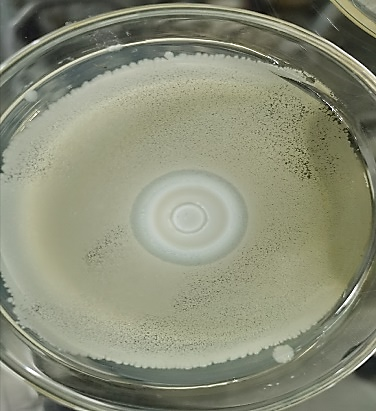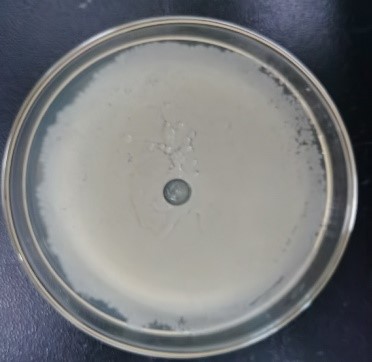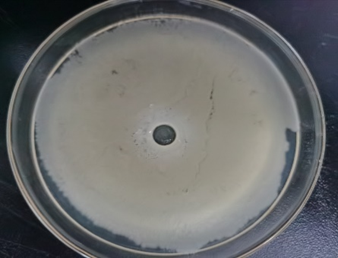Evaluation of vitro bacteriostatic effect of different feed grade calcium phosphates
1. Purpose of the test:
Confirming that different feed grade calcium phosphate products have obvious differences in bacteriostatic effect, and the product with lower pH value has better bacteriostatic effect through in vitro bacteriostatic test
2. Test samples
Calcium phosphate products: MCP、MDCP、DCP
Bacterium: E. Coli
3. Test results
Place the sterilized Oxford cup in a bacterial culture-coated test plate, inject the test sample (saturated calcium phosphate solution) into the cup, pre-diffuse at 4℃ for 2 hours, incubate at 37℃ for 24 hours, and measure the size of the inhibition zone.
Table. Test Results of vitro bacteriostatic effect of different feed grade calcium phosphates
Sample Number | Name of the Sample | Inhibition Zone Diameter (mm) | IZ Average Value | Sample PH Value |
1# | MCP | 21.77 | 2.41 | |
2# | MCP | 18.79 | 19.89 | 2.37 |
3# | MCP | 19.11 | 2.43 | |
4# | MDCP | 10.28 | 3.01 | |
5# | MDCP | 7.74 | 9.51 | 3.00 |
6# | MDCP | 10.52 | 3.02 | |
7# | DCP | 7.35 | 7.20 | |
8# | DCP | 7.87 | 7.81 | 7.19 |
9# | DCP | 8.21 | 7.22 |
It can be seen from the table that there is a significant difference in the antibacterial effect between different types of calcium phosphates, with the order of antibacterial effect being MCP>MDCP>DCP. E. Coli is sensitive to MCP, and the average diameter of the inhibition zone is close to 20mm. E. Coli is not sensitive to MDCP and DCP, and the average diameter of the inhibition zone is less than 10mm. Correspondingly, the pH value of saturated solutions of different types of calcium phosphates also follows a similar pattern, with the pH values in the order of MCP<MDCP<DCP. Therefore, through in vitro antibacterial tests, it is found that MCP with a lower pH value shows significant antibacterial effects. In the era of feed without antibiotics, MCP is the best phosphate-calcium additive.
MCP MDCP DCP


